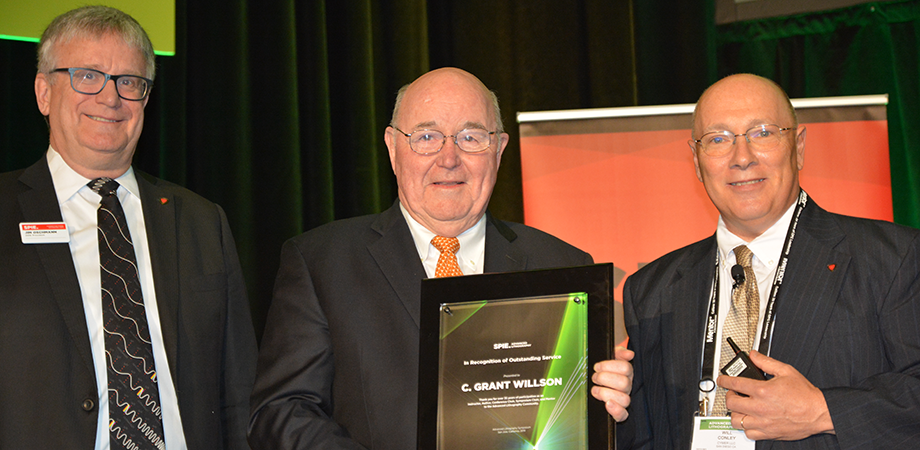Meeting the Photoresist Challenge
Confronting "the triangle of death."

In semiconductor manufacturing, a circuit design is transferred layer by layer onto a wafer. If all goes right, the result is a functioning chip. In today's process, photoresist plays a crucial role. When exposed to light, photoresist changes, thereby creating a pattern on the wafer that serves as a mask for subsequent processing.
Like other aspects of semiconductor fabrication, photoresist faces challenges due to shrinking feature sizes, said C. Grant Willson, a professor at the University of Texas at Austin, during a talk on Tuesday, 26 February at the SPIE Advanced Lithography symposium. Willson, who is retiring this year, has a long and distinguished history of resist research and development.
Willson said that the problem confronting current resist has been called "the triangle of death." This is because there are three interconnected legs: sensitivity, line edge roughness, and resolution or blur. Any two can be optimized but not all three.
"It's like a balloon," Willson said. Squeezing in one place causes it to pop out somewhere else.
This happens due to a catalyst used in chemically amplified resist, an innovation Willson helped create decades ago. The catalyst enhances photoresist polymerization, but this reaction diffuses into areas that are not exposed to light. So, for low-line edge roughness, catalyst diffusivity should be low, but for high sensitivity to light it should be high -- a conflict that causes problems as feature sizes shrink.
In his presentation, Willson described a candidate for a resist that is chemically amplified but does not use a catalyst. It is a zipper polymer, a class of chemicals that come together and apart like a zipper.
So far, the results are promising, according to Willson. The resist candidate is efficient, as shown by an 85% quantum yield. It also is radiation insensitive, thermally stable, and compatible with formulations it would be in. Other good signs are that the degree of gain goes up with polymerization, and the line edge roughness looks good.
It might be an escape from the triangle of death, but that can only be determined by more research as well as further optimization, Willson said. He added that university labs such as his get materials through only very early development. The rest of the journey to a mature commercial product must be done by companies, either on their own or in partnership with universities.
However, resist suppliers find themselves in a situation that can make funding such development a challenge. This came up in a Q&A session following the all symposium panel discussion held the night of Tuesday, 26 February. The panelists noted the need for new photoresist platforms. But they also pointed out that the overall resist market is not large and is not moving in the right direction to make future funding easier.
"The market is getting smaller," said Ryan Callahan of FUJIFILM.
One possible solution mentioned during the panel discussion is doing initial research and development jointly in a pre-competitive manner, a model followed by consortia for semiconductors and other technologies. Another solution might arise from better information and deeper knowledge about photoresist mechanisms, a necessary focus on basics that some see coming.
"We will be able to track from absorption to final photoproduct," said John Petersen of IMEC. This purely scientific information could then provide the basis for further resist technology development, he added.
Hank Hogan is a science writer based in Reno, Nevada.
See more news and highlights from SPIE Advanced Lithography.
| Enjoy this article? Get similar news in your inbox |
|



